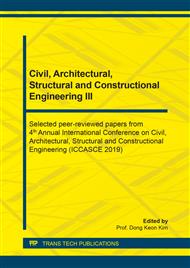p.3
p.12
p.20
p.25
p.30
p.35
p.41
p.49
p.56
Water Vapor Transmission Properties of Men’s Quick-Dry Sportswear
Abstract:
This study evaluated the quick dry properties of summer men’s sportswear T-shirts of different brands (Nike, Adidas, Laishilong and Columbia) by studying the water vapor transmission behavior. The results indicate that Laishilong was the best sample in terms of water vapor transmission rate, whereas Columbia was the poorest. Moreover, samples of Nike, Adidas, Laishilong and Columbia, had similar water vapor transmission rate. This implies that they had comparatively similar performance in water vapor permeability.
Info:
Periodical:
Pages:
30-34
Citation:
Online since:
April 2020
Price:
Сopyright:
© 2020 Trans Tech Publications Ltd. All Rights Reserved
Share:
Citation:


